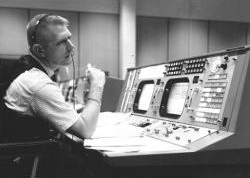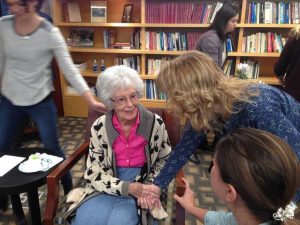NASA Astronaut Mary Cleave Dies, Age 76
Retired NASA astronaut Mary Cleave, a veteran of two spaceflights, passed away on November 27 at the age of 76. A pioneering figure in her field, Cleave, born in Southampton, New York, achieved significant milestones during her illustrious career. Trained in civil and environmental engineering, biological sciences, and microbial ecology, she made history as the first woman to serve as an associate administrator for NASA’s Science Mission Directorate.
Mary Cleave’s academic journey began at Colorado State University, where she earned a Bachelor of Science degree in biological sciences in 1969. Subsequently, she pursued advanced degrees, obtaining a Master of Science in microbial ecology in 1975 and a doctorate in civil and environmental engineering from Utah State University in 1979.
NASA Associate Administrator Bob Cabana expressed his sorrow at Cleave’s passing, calling her a “force of nature with a passion for science, exploration, and caring for our home planet” in a statement issued by NASA.
Cleave’s career at NASA commenced when she was selected as an astronaut in May 1980. Her technical assignments included pivotal roles such as flight software verification in the Shuttle Avionics Integration Laboratory, spacecraft communicator on five space shuttle flights, and contributions to malfunctions procedures book and crew equipment design.
Cleave embarked on her first mission, STS-61B, aboard the space shuttle Atlantis on November 26, 1985. This mission involved deploying communications satellites, conducting spacewalks, and executing various experiments. Most notably, STS-61B tested assembly techniques for erectable structures in space that eventually became important for assembling the International Space Station.
Cleave’s second mission, STS-30, took place on Atlantis as well, launching on May 4, 1989. During this four-day mission, the crew successfully deployed the Magellan Venus exploration spacecraft, marking a significant achievement as the first U.S. planetary science mission since 1978. Magellan went on to map over 95% of Venus’s surface, providing crucial data about its atmosphere and magnetic field.
Post-astronaut career, Cleave transferred from NASA’s Johnson Space Center to the Goddard Space Flight Center in 1991. There, she served as the project manager for SeaWiFS, an ocean color sensor monitoring global vegetation. She further contributed to NASA as the deputy associate administrator for advanced planning in the Office of Earth Science at NASA’s Headquarters in Washington, D.C., from March 2000 to February 2007.
Cleave’s impactful tenure culminated in her role as the associate administrator for NASA’s Science Mission Directorate from August 2005 to February 2007. In this capacity, she oversaw a diverse array of research and exploration programs spanning Earth, space weather, the solar system, and the universe.
Mary Cleave’s numerous accolades include two NASA Space Flight medals, two NASA Exceptional Service medals, an American Astronautical Society Flight Achievement Award, a NASA Exceptional Achievement Medal, and the title of NASA Engineer of the Year. Her retirement from NASA in February 2007 marked the conclusion of an extraordinary career that left an indelible mark on space exploration and scientific research.
In addition to her professional achievements, Mary Cleave’s personal data reveals that she was born on February 5, 1947, in Southampton, New York. Her father, Dr. Howard E. Cleave, resides in Williamstown, Massachusetts, while her mother is deceased. Cleave was actively involved in professional organizations, including the Society for Professional Engineers, the Association of Space Explorers, Women in Aerospace, Tri-Beta, Sigma XI, and Tau Beta Pi.
Mary Cleave’s rich experience prior to joining NASA involved graduate research, research phycologist, and research engineer roles at Utah State University. She dedicated her efforts to ecological research, including studying algal components of cold desert soil crusts and the effects of salinity on freshwater phytoplankton productivity.
Cleave’s space flight experience, detailed through her missions STS-61B and STS-30, showcased her significant contributions to satellite deployment, spacewalks, and scientific experiments. Her impact extended far beyond her time in space, influencing ocean color monitoring and contributing to crucial planetary exploration missions.
Mary Cleave’s legacy is one of pioneering achievements, dedication to scientific exploration, and a lasting impact on NASA’s mission to understand and explore the mysteries of space.








